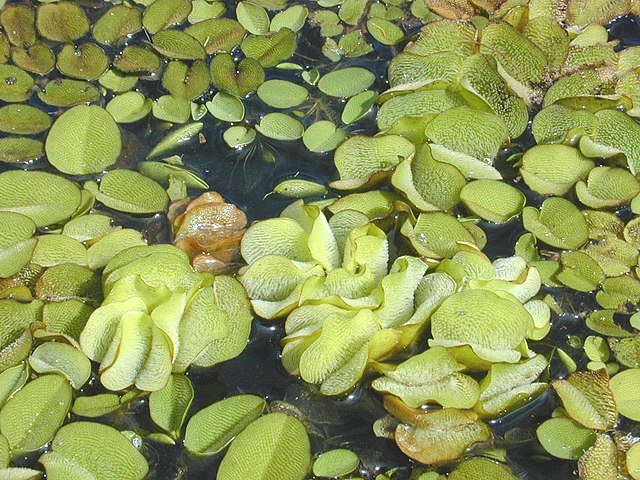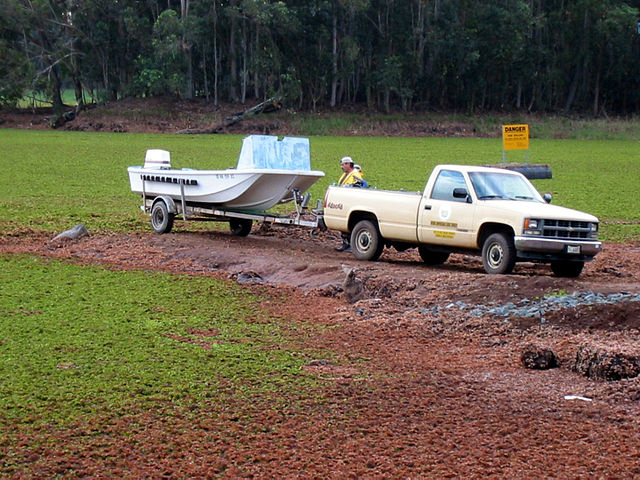Salvinia molesta, commonly known as giant salvinia, or as kariba weed after it infested a large portion of Lake Kariba between Zimbabwe and Zambia, is an aquatic fern, native to south-eastern Brazil. It is a free-floating plant that does not attach to the soil, but instead remains buoyant on the surface of a body of water. The fronds are 0.5–4 cm long and broad, with a bristly surface caused by the hair-like strands that join at the end to form eggbeater shapes. They are used to provide a waterproof covering. These fronds are produced in pairs also with a third modified root-like frond that hangs in the water. It has been accidentally introduced or escaped to countless lakes throughout the United States, including Caddo Lake in Texas, where the invasive species has done extensive damage, killing off other life.
Salvinia molesta
Giant salvinia completely cover Lake Wilson in Hawaii
Caddo Lake is a 25,400-acre (10,300 ha) lake and bayou (wetland) on the border between Texas and Louisiana, in northern Harrison County and southern Marion County in Texas and western Caddo Parish in Louisiana. The lake is named after the Caddoans or Caddo, Native Americans who lived in the area until their expulsion by the United States in the 19th century. The US forced most of them to move west to Indian Territory.
Viewed from a point near Uncertain
Caddo Lake during winter
The Channel was used by steamboats to reach the port at Jefferson, until water levels fell after the removal of the Great Raft.
Caddo Lake c. 1910






